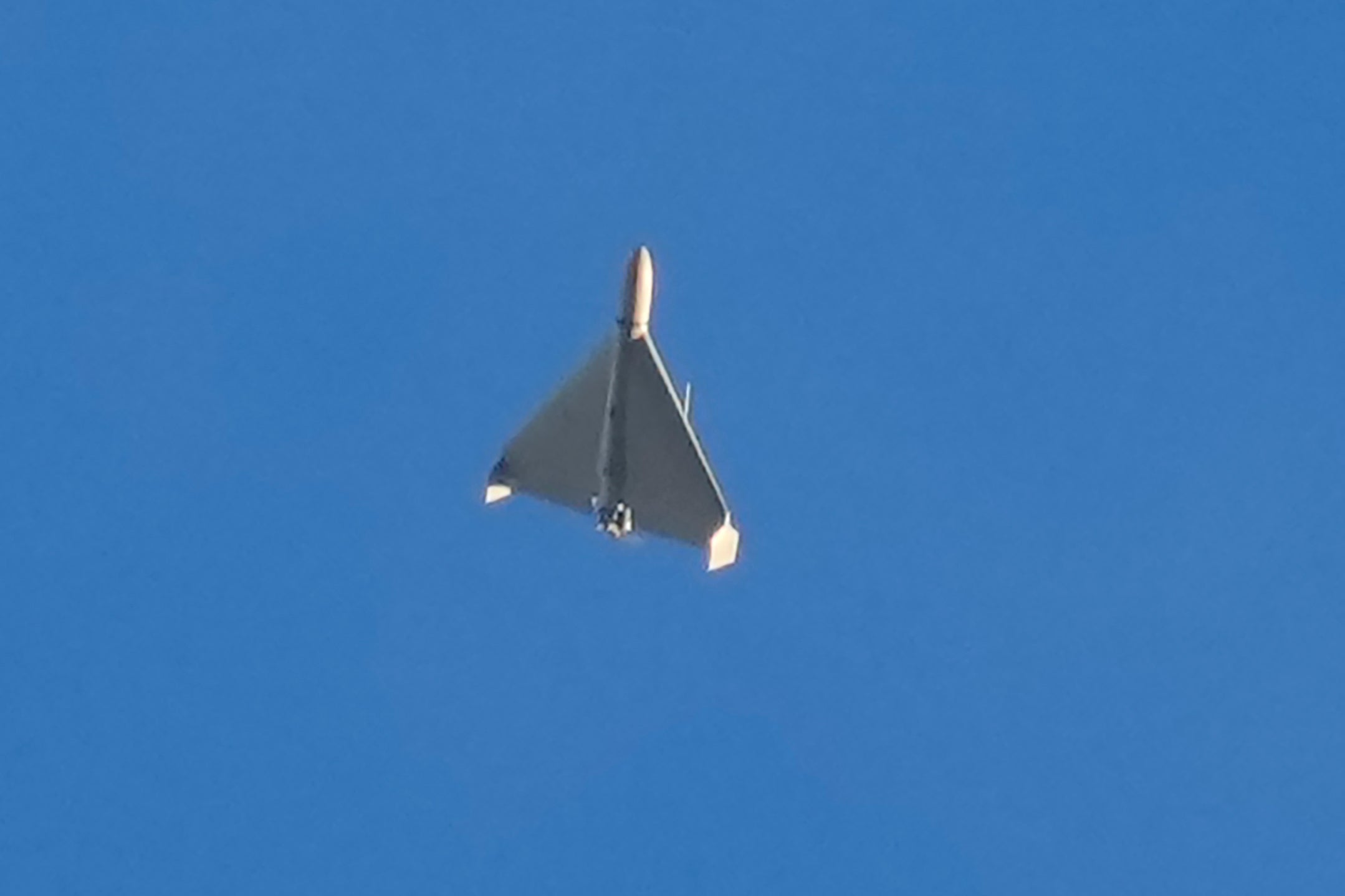Ukraine aims to build an army of one million drones as Moscow becomes the target
Your support helps us to tell the story
From reproductive rights to climate change to Big Tech, The Independent is on the ground when the story is developing. Whether it's investigating the financials of Elon Musk's pro-Trump PAC or producing our latest documentary, 'The A Word', which shines a light on the American women fighting for reproductive rights, we know how important it is to parse out the facts from the messaging.
At such a critical moment in US history, we need reporters on the ground. Your donation allows us to keep sending journalists to speak to both sides of the story.
The Independent is trusted by Americans across the entire political spectrum. And unlike many other quality news outlets, we choose not to lock Americans out of our reporting and analysis with paywalls. We believe quality journalism should be available to everyone, paid for by those who can afford it.
Your support makes all the difference.Ukraine will produce thousands of long-range drones capable of deep strikes into Russia in 2024 and already has up to 10 companies making drones that can reach Moscow and St Petersburg, Ukraine’s digital minister said.
Mykhailo Fedorov spoke about the wartime drone industry he has championed in a interview in Kyiv in which he revealed new details about the sector, after a spate of Ukrainian drone attacks on Russian oil facilities in recent weeks.
“The category of long-range kamikaze drones is growing, with a range of 300, 500, 700, and 1,000 kilometres. Two years ago, this category did not exist ... at all,” he told Reuters.
Fedorov, 33, has been at the heart of Ukraine’s effort to nurture private military startups to innovate and build up the drone industry as the war goes into its third year and Ukraine seeks new ways to fight back against well dug-in Russian forces.
The recent series of strikes on oil facilities, he said, reflected the government’s progress in rapidly deregulating the drone market and increasing funding for it, with the state acting as a venture investor.

Some $2.5 million in grants were allocated to military tech startups via the BRAVE1 initiative set up by the government last year, an amount set to be increased roughly tenfold in 2024, he said.
“We will fight to increase the financing even more,” he added.
In contrast with Russia where drone production is dominated by the state, the vast majority of manufacturers in Ukraine are private. Fedorov said only one of the 10 companies whose drones could fly as far as the regions around Moscow or St Petersburg was a state company.
Since the first year of the full-scale war, Russia has used thousands of Iranian “Shahed” drones that fly towards their target and detonate on impact for long-range strikes.

Ukraine’s production levels and deliveries increased more than 120 times in 2023, according to Fedorov, part of a broader wartime push to develop and produce drones to narrow the gap with Russia’s strike capabilities.
Fedorov said he agreed with an assessment by Ukraine’s military spy chief Kyrylo Budanov that Kyiv had achieved a “certain kind of parity” with Moscow in the production of long-range drones.
“We need to act in an anti-bureaucratic way. This is the essence of a breakthrough in the war of technology. We are going to continue to put our bets on this, to work in this direction. Because technology can really save us,” he said, noting the shortage of artillery rounds Ukrainian troops were facing.
Overall, more than 300,000 drones of different types were contracted last year and more than 100,000 were sent to the front, he said, adding that the figures did not cover volunteer supplies which he said made a “significant contribution”.
“We removed taxes on UAV (unmanned aerial vehicle) components, simplified the contracting procedure, and the procedure for decommissioning,” he said.
“In other words, we took all the blockages that private sector companies were facing and addressed them in six months by passing all the necessary laws and resolutions.”

President Volodymyr Zelenskiy has set a target for Ukraine this year to produce one million First Person View (FPV) drones, which are cheap to make and weaponised in huge quantities by both sides on the front.
Ukraine’s drone industry relies heavily on components from foreign countries, including China, widely seen as an ally of Russia. Fedorov said there was an effort to localise production of components.
“That’s why I think that if we continue this trend, by the end of this year we will have a lot of companies that have already made more than 50% of their components locally.”
The surge in recent production put such a strain on logistics that changes had to be rapidly made to prevent long delays in deliveries, he said.
“In December alone, drone deliveries were 50 times higher than in the entire 2022. Just imagine, the system was not prepared for that, and I think the logistics did not realize that such volumes were possible.”
The private sector was also held back by a state monopoly on making drone ammunition. Ukraine passed a resolution ending that state monopoly three months ago and later halted a separate one on making artillery rounds and rockets, he said.
“Over the past three months, more than 20 companies have already undergone testing and can now hand over ammunition to the state,” he said.
Ukraine has trained 20,000 drone operators since it launched a programme to provide grants for military training in private schools at the beginning of 2023, he said. There were 20 such schools, he added.
“We pay for every military person who comes to these schools. Now we have a plan to turn this into a larger state program and separately to modernize, update several training centres and make them work at a high level.”

Join our commenting forum
Join thought-provoking conversations, follow other Independent readers and see their replies
Comments